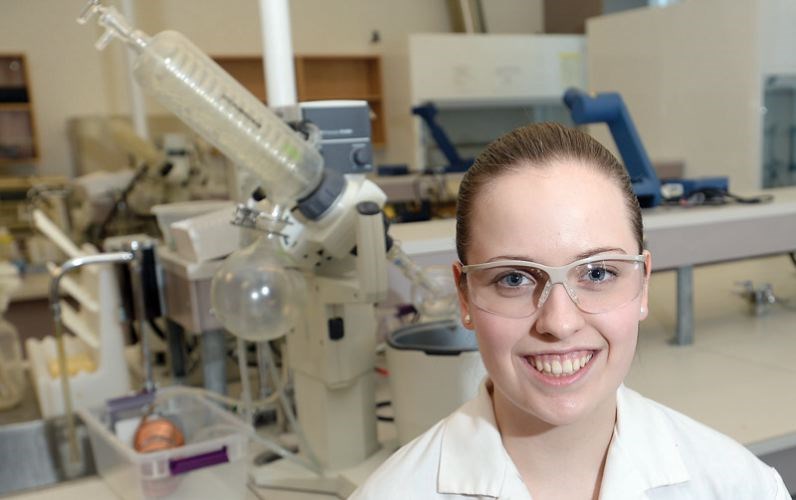It all started with a basket of fruit.
Years ago, Emily O’Reilly brought her grandfather that gift, and rummaging through he picked a small, fuzzy fruit and bit.
“When he got to the pit of the apricot, he said ‘There’s medicine in here,’” remembers O’Reilly, now 17.
O’Reilly, who is one of two Canadians heading to Taiwan for an international science fair, asked the essential question that has sent her to four national science fairs for her projects: why?
O’Reilly’s grandfather told her how the villagers in his Croatian hometown would collect apricot kernels for neighbours complaining of what they believed to be stomach cancer.
“It was said to prolong their life or reduce their pain,” says the Grade 12 College Heights Secondary student. “It really stuck with me. I thought it was very interesting that it was just a home remedy that had come from his village.”
So, she set out to prove whether it could work.
“It’s actually a very controversial,” says O’Reilly, adding past studies hadn’t accounted for the presence of the toxin cyanide in the almond-sized kernel, and so the apricot’s ability to suppress stomach ailments was ruled inconclusive.
So she, with the help of mentors at the University of B.C and College of New Caledonia, created a method to extract the cyanide from the kernel, and then test its effect on a common stomach bacteria.
To get there, O’Reilly had to pit, crack, then grind down more than 100 apricot kernels. Once she’d removed the cyanide, she tested the kernels using a Nuclear Magnetic Resonance machine - a $300,000 piece of equipment housed in UNBC organic chemistry professor Guy Plourde’s teaching lab.
She puts the extract in a thin test tube, then places it in the chest-high machine, which spits out readings on a sheet of paper that look like an erratic heart monitor.
O’Reilly points to a gap, a flat line, between several spikes.
“The spike itself will show where the cyanide is,” says O’Reilly, but when the spike was missing, she knew her method worked.
Next she turned to the bacteria - called Helicobacter pylori - that usually lies dormant in two thirds of humans, but when infected can lead to stomach cancer, according to the National Cancer Institute.
Then came the big test: whether the cyanide-absent apricot could hinder the bacteria’s growth.
It did, and O’Reilly recalls that moment, grinning.
“That was an amazing feeling.”
And that moment - and the 50 hours of lab work and couple hundred hours in research and analysis leading up to it - is the reason O’Reilly was selected to present in Taiwan this February.
Plourde says the recognition for her university-level research is deserved.
“She’s very competent. She’s has a lot of knowledge and the key is, she wants to have the knowledge that she’s not getting in high school.”
“She’s so keen, it’s not funny,” says Plourde, laughing.
Plourde said he noticed her curiosity right away - she even audited a third-year class because it would help with her project.
“It’s like a drug - you get caught,” he says.
In the short term, O’Reilly says she’ll likely study science at UNBC, but her future goals are much bigger.
“I want to make a difference in the world. If one day my research does made a difference, that would be a dream come true.”

.png;w=120;h=120;mode=crop)

